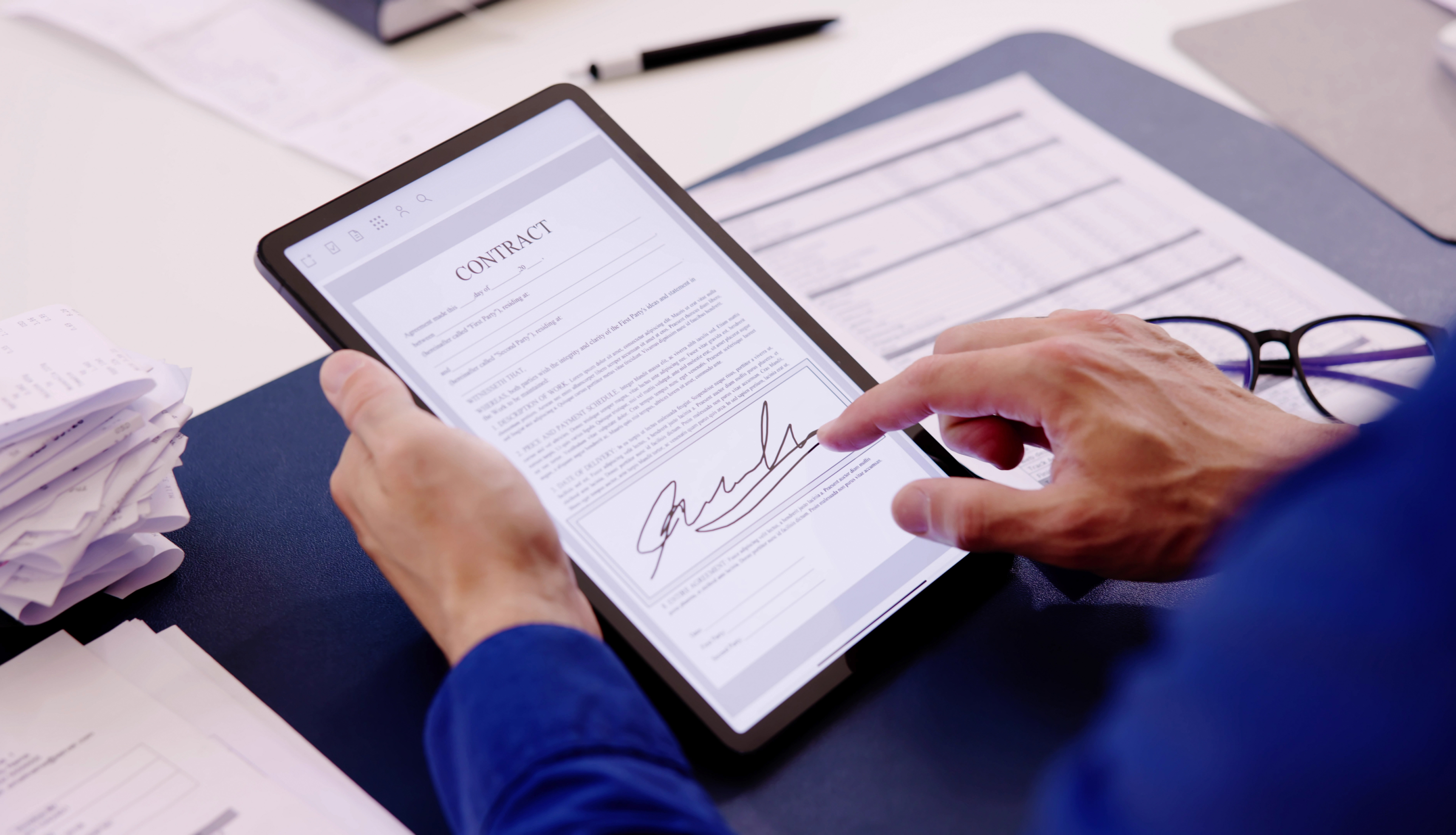© 2025. All Rights Reserved. Powered by Gritstone Technologies

Imagine closing a deal, approving a contract, or onboarding a new employee - all without ever leaving the systems your team already knows. That’s the power of e-signature integration. In today’s fast-moving world, seamless workflows aren’t just a bonus - they’re essential.
If your business is already using digital signatures, you’re on the right track. But integrating them into your CRM, ERP systems, and daily operations can take efficiency, security, and user experience to the next level. Let’s dive into how seamless software connectivity is changing the way businesses work - and how easy it can be to get started.
Why Integration Makes a Big Difference
Working with stand-alone e-signature platforms often means switching between different apps and re-uploading documents. Every extra step slows things down, adds complexity, and increases the chance of errors.
E-signature integration removes these barriers. It allows employees to send, sign, and manage documents directly within the applications they already use. This cuts down turnaround times, reduces mistakes, and makes day-to-day work smoother for everyone.
It’s about building workflows that feel effortless - for your teams and for your customers.
CRM Integration: Streamlining Sales and Customer Management
Customer relationship management systems are the backbone of sales, marketing, and customer service activities. Integrating digital signatures with these systems brings several benefits:
- Sales teams can send contracts for signature right from a customer record.
- Automated workflows can trigger signing requests at key stages.
- Completed documents are instantly stored and linked to customer profiles.
This kind of integration means faster deal closures, better customer experiences, and more organized internal processes all without switching between different platforms.
ERP Integration: Optimizing Core Business Operations
Enterprise resource planning systems manage essential back-office tasks like finance, procurement, HR, and inventory. Adding e-signature solutions into these systems can create powerful results:
- Purchase orders, invoices, and HR documents can be approved digitally with minimal delay.
- Every action can be tracked for full auditability and compliance.
- Paperwork bottlenecks are eliminated, leading to quicker business decisions.
By connecting digital signatures with your ERP, processes across departments become faster, cleaner, and far more efficient.
How Seamless Software Connectivity Works
Behind the scenes, digital signature APIs make integration possible. APIs (application programming interfaces) are the bridges that allow different software systems to "talk" to each other securely and effectively.
A strong digital signature API offers:
- Custom workflow options to match your existing business processes
- Secure encryption to protect sensitive information
- Scalability as your organization grows
- Flexibility to adapt to on-premises or cloud-based systems
With the right integration setup, teams experience a fully connected digital environment without even noticing the complex work happening in the background.
Common Ways Businesses Use E-Signature Integration
Companies across all industries are finding smart ways to leverage e-signature integration:
- Sales teams sending proposals and agreements directly from customer profiles
- HR departments digitally onboarding new employees
- Finance teams managing approvals for budgets, expenses, and vendor contracts
- Legal departments handling agreements with full digital audit trails
- Operations teams streamlining procurement approvals
Wherever signatures are needed, integration simplifies the process - and speeds it up.
How to Get Started with E-Signature Integration
If you’re ready to connect your e-signature solution with your business systems, here’s a simple roadmap:
- Analyze your workflows — Identify where signed documents play a major role.
- Choose an integration-friendly solution — Look for options with robust API support and documentation.
- Plan your integration carefully — Ensure it aligns with security policies and compliance standards.
- Test thoroughly — Start with a pilot group and work out any challenges before a full rollout.
- Train your team — Clear instructions and guidance will maximize adoption.
- Track improvements — Measure time savings, error reduction, and user satisfaction to gauge success.
Starting small and scaling up can make integration feel manageable and rewarding.
Conclusion
Integrating e-signature solutions with your existing business applications is a smart step toward a faster, more connected workplace. Whether you're improving customer service, speeding up internal approvals, or reducing manual errors, seamless integration helps your organization move more efficiently and stay ahead.
Seamless software connectivity isn't just about technology it's about creating a better experience for everyone who interacts with your business.
Are you ready to make signing documents the easiest part of your workflow?





